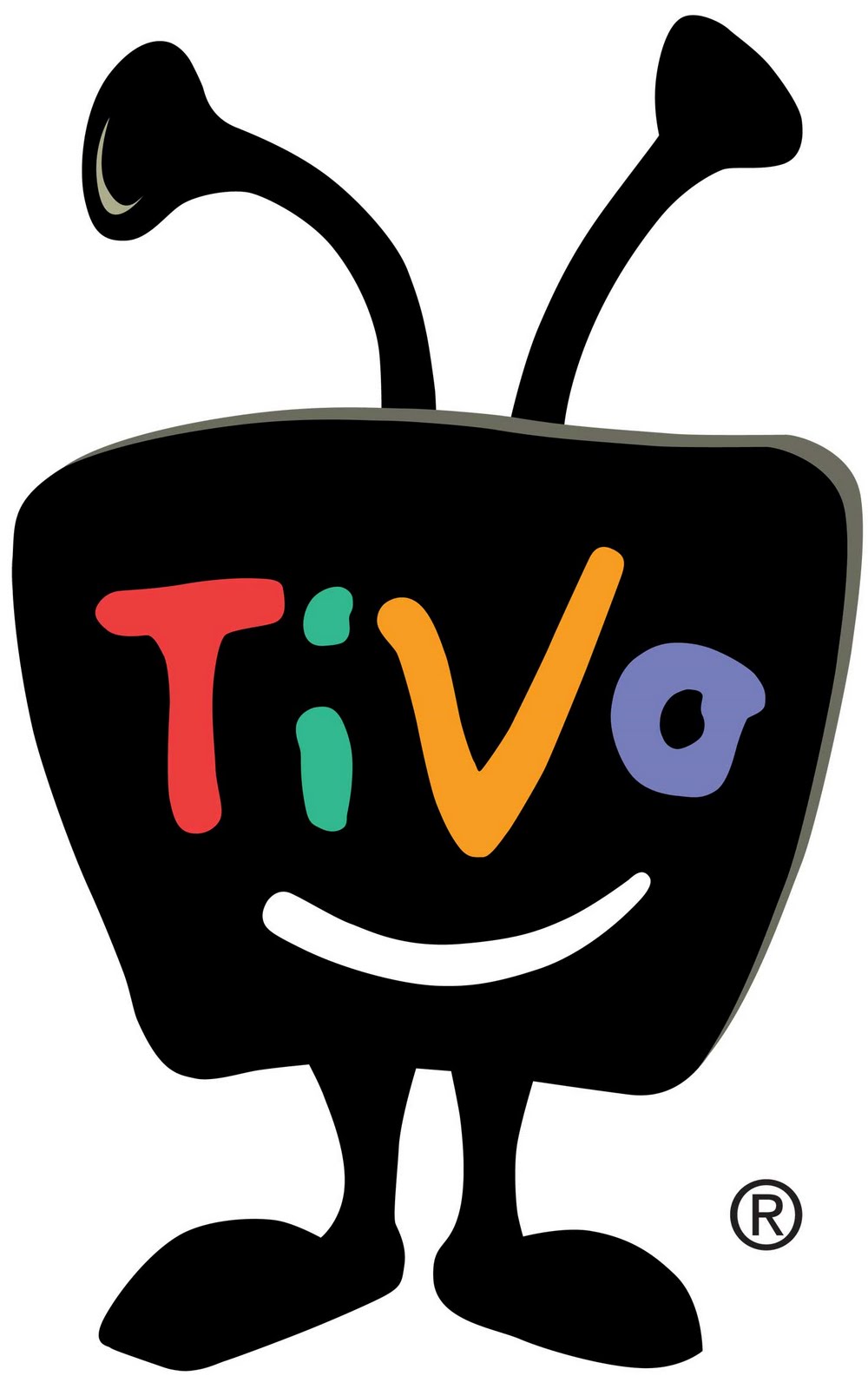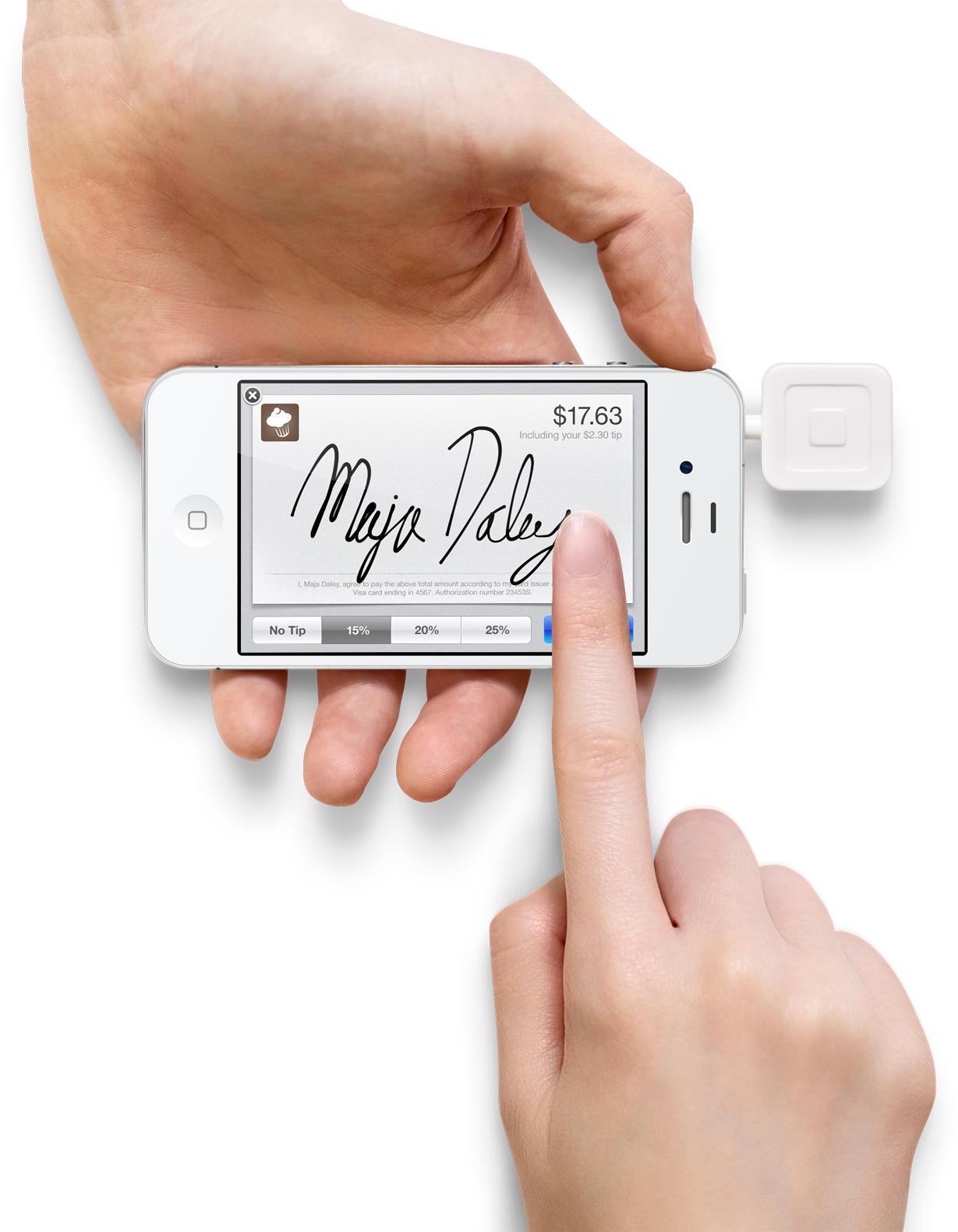This is a guest post by Charlie Fitzgerald, a second-year MBA candidate at the Crummer School of Business at Rollins College. He’s passionate about Technology, Entrepreneurship and Finance, and you can follow him on Twitter here.
———
To stimulate sales and build customer loyalty, it’s important that a company clearly communicates to consumers why their product is useful, and why the company is motivated to produce it.
There are two primary areas in the human brain involved in decision making; the neocortex which is responsible for rational, analytical thought, and the limbic brain which is responsible for judging feelings. When a consumer’s looking to buy, these two portions of the brain process information and collaborate to set a subjective demand for the product. Both processors are significant in decision making, but it’s the limbic brain that ultimately pulls the trigger.
 In 1999, Mike Ramsay, and Jim Barton, ineptly raced their new product, TiVo, to the market. TiVo was innovative, and the technology has significantly improved television viewing ever since. Although, in the company’s feckless hustle to deliver its product to the market TiVo executive’s overlooked one very important move. They didn’t effectively communicate to consumers why they needed a TiVo.
In 1999, Mike Ramsay, and Jim Barton, ineptly raced their new product, TiVo, to the market. TiVo was innovative, and the technology has significantly improved television viewing ever since. Although, in the company’s feckless hustle to deliver its product to the market TiVo executive’s overlooked one very important move. They didn’t effectively communicate to consumers why they needed a TiVo.
One year after going public, TiVo missed projected unit sales set by one market researcher by a staggering 93%. The few consumers who did purchase a TiVo unit in 1999 were swayed to buy initially because of rational appeal; while this is only part of the purchasing thought process. Early commercials explained what TiVo could accomplish, and how it worked, but failed to induce a visceral response in consumers. Instead of making it clear why they needed a TiVo, marketers of the company left it up to the consumer.
This communication failure by TiVo’s leadership adversely affected initial product sales and thwarted future customer loyalty. TiVo’s developers made out with a coined phrase, but the company’s marketing strategy left shareholders with nothing to show for.
In retrospect, TiVo’s leadership should have concentrated on three fundamental questions prior to launch. Who are we, and why? Who are our target consumers? How do we engage our target consumers to feel our purpose? Consideration of these questions would have allowed TiVo’s leadership to understand, and consequentially better communicate purpose to consumers.
To inspire consumer loyalty, business leaders must focus on appealing to consumer’s limbic brain by clearly illustrating why the product is beneficial, and clarifying why the company exists to produce it. A convinced limbic brain is the tipping point of a purchase, and the primary driver of consumer trust and loyalty.
Innovation becomes disruptive when it creates a simpler, faster, cheaper or better way to do something that lots of people want.
Lots of companies are disrupting their respective markets: AirBNB, Facebook, Stripe, Gumroad, Zappos, Redbox, Netflix — the list could go on. All of these companies found better ways to give people stuff they wanted. And, in most cases, something that alot of people wanted. In some cases (AirBNB, Gumroad), they gave people something they didn’t even know they wanted, until they did.
 ReCorporate is about more than disruption — it’s about rethinking the essence of business and leadership. It’s one thing to create a disruptive product. It’s an entirely different thing to build a company that disrupts an entire industry, and creates a new standard in design, pricing, value creation and corporate ethos while they’re at it.
ReCorporate is about more than disruption — it’s about rethinking the essence of business and leadership. It’s one thing to create a disruptive product. It’s an entirely different thing to build a company that disrupts an entire industry, and creates a new standard in design, pricing, value creation and corporate ethos while they’re at it.
Square has done just that. They’ve built a product that creates dynamic user value through the marriage of hardware and software to accomplish an incredibly common (and often painful) task. Millions of small businesses who accept credit cards each day are forced to purchase point of sale equipment and sign long-term contracts with traditional merchant service providers. These systems are built for large companies with many locations, not for local businesses — but since there was no viable alternative, these small businesses used to have no choice.
Square gives anyone and everyone the ability to accept credit cards simply, elegantly, and cheaply. The design — both hardware and software — is brilliant. Whether you’re a college student splitting a dinner check or the owner of a local cafe, it just works.
Square values their team members, and they’ve created a culture that allows everyone to operate at the intersection of their passions and abilities — something that many organizations miss entirely (and sacrifice a great bit of efficiency and capacity in the process).
It’s just the tip of the iceberg for Square. They’ve seen incredible growth over the past three years, now processing millions of dollars of payments a day. But there are still millions of small businesses and individuals who experience the pain of traditional merchant services every day. As word continues to spread, and Square continues to scale, they will create exponentially more value for small business owners and individuals in thousands of markets and tens of thousands of cities — a very exciting future lies ahead.
[Square has given college students the opportunity to be a part of this future and join their team to reach these small business owners as SquareU Reps. These reps act as the face of Square to small businesses in their region, and I’m excited to say that I’m joining the Square team in this capacity. If you’re interested, or know someone who would be, shoot me an email or check out the job posting here. If you want to experience the magic of Square, click here to get your free reader.]
Groupon is the butt of a lot of jokes within the tech startup crowd, especially after their recent IPO in November. Most of these jokes are deserved — they lose tons of money each quarter, their founders have already cashed out, and the future is bleak for Groupon.
Groupon’s initial value proposition was incredibly innovative. They capitalized on one of the most foundational principles of economics: things costs less to businesses in bulk. They built a platform that empowered businesses to pass these savings onto their customers in exchange for viral and rapid marketing.
Of course, they had no business model. But who cares? Neither does Instagram. Neither did Twitter.
No one cares if you have a business model right off the bat – anyone can monetize a couple million users (or so it goes). As you grow, and continue to drive value through innovation, you find new and exciting revenue models to slowly become financially sustainable.
The potential for Groupon was massive. They gained tons of users very quickly, and they were being cloned hundreds of times every week all over the world. With a great business model, international expansion through acquisition would have been easy. The group-buying economics are location-agnostic. There was a massive upside, but it had to be capitalized on.
But here’s the kicker: they stopped.
The lack of innovation as Groupon grew was astounding. No new business model. No new value. No new marketing strategy. Just skyrocketing costs of customer acquisition and a management team who couldn’t care less.
Potential doesn’t matter if it’s never realized. One innovation is never enough. It takes continual innovation on every front to drive sustainability and growth within organizations. The best companies never settle.
In a world of certainty, profit doesn’t exist.
Profit, both social and fiscal, is only possible with uncertainty in the markets. Without uncertainty, every market would be at perfect equilibrium all the time. Profit margins disappear. There would be no stock market. Venture capital becomes impossible.
 Why? Because uncertainty inspires risks, and risks create opportunities for profit.
Why? Because uncertainty inspires risks, and risks create opportunities for profit.
Uncertainty is the cliff lying ahead of the base jumper. Risk is the jump — the commitment to free fall, fully embracing the very real possibility of catastrophic failure. Profit is the parachute deploying — surviving the fall, with a chance of striking the perfect landing upon touchdown.
Sometimes these risks lead to monetary profit. Peter Thiel took a risk on Facebook — a big risk at that, and he’s made about $7 Billion for his willingness to throw $500,000 at a startup trying to do the unthinkable: connect the world. In 1999, Sequoia Capital and Kleiner Perkins took a massive risk on Google, investing $25 Million for 20% of the company. Now, with Google’s market cap at $182 Billion, they’ve become Silicon Valley legends for that single investment.
Sometimes it’s social profit. Not (necessarily) in a ‘social entrepreneurship’ sense, but in the broader sense — simply that they end up changing the world. Society is better off because of the risk someone took. A recent, and perhaps uncanny example of this is Airbnb. No one thought it would work. Not even Fred Wilson. But Paul Graham believed it would — so much so that he incubated them at Y-Combinator. They are changing how people travel, disrupting the entire hotel industry, and driving income for people who would otherwise be struggling to make ends meet. Or, take Ushahidi. Omidyar Network, the Knight Foundation, and others took a risk funding Ushahidi in 2008 following the post-election violence in Kenya. Today, they’re changing the way information flows during crises, with more than 20,000 deployments of their crisis mapping platform across the globe.
The point is, very rarely does anyone find success by fabricating a risk-free venture. It’s in the darkness of uncertainty that the largest opportunities lie. People that consistently embrace risk — and uncertainty — usually end up changing the world.
———
Photo licensed under Creative Commons from Roo Reynolds via Flickr
At Lollapalooza 2011, a weekend-long music festival in the heart of Chicago, I saw one of the best small-business plays I’ve seen in a very long time — a perfectly timed and perfectly executed micro-pivot by the legendary Chicago deep dish pizza restaurant Lou Malnati’s.
 Lollapalooza is famous for their high-quality food. Many of Chicago’s top restaurants and chefs are on hand at the festival, providing concert goers with anything from Lobster Bisque to gourmet hamburgers, and among them were two of Chicago’s top pizzerias. To be honest, I don’t even remember the name of the first one (Sarah’s, Sally’s, Sage’s…something like that) — I only remember Lou Malnati’s, and there’s probably another 250,000 people who would say the same.
Lollapalooza is famous for their high-quality food. Many of Chicago’s top restaurants and chefs are on hand at the festival, providing concert goers with anything from Lobster Bisque to gourmet hamburgers, and among them were two of Chicago’s top pizzerias. To be honest, I don’t even remember the name of the first one (Sarah’s, Sally’s, Sage’s…something like that) — I only remember Lou Malnati’s, and there’s probably another 250,000 people who would say the same.
On day one of the festival, both pizza stands were offering their slices of deep dish pizza for $5. Lou Malnati’s is widely considered to be the best pizza in Chicago, so their line was usually a bit longer than the other stand (as you would expect), but not by much. However, when I arrived on the morning of day two, I noticed that Lou Malnati’s signage indicated a pricing change — where the “$5” used to be, there was now a large sticker that read “$3.” I immediately realized what they were doing, and it was pure genius. By the afternoon of day two, the Lou Malnati’s line was consistently twice or three times as long as the other pizza shop. And by day three, Lou Malnati’s might as well have been the only pizza stand at Lollapalooza.
Lou Malnati’s executed a ingenious “micro-pivot.” (I can’t find this term anywhere on the web, but it seems to be the best way to describe what happened, so I’ll coin it here.) Some manager realized that if they cut their prices by 40%, they would instantly become the no brainer pizza choice at Lollapalooza. They already had the better product. They were already the market leader. They were already priced competitively. But they weren’t the no brainer.
This $2/slice price drop certainly eradicated a significant portion of their margins, and though I haven’t seen any of their numbers from Lollapalooza, I would be willing to bet it was one of the better decisions they’ve ever made. Why? Because by day three of the festival, no one cared about the other pizza place. Lou Malnati’s became the only option for pizza at Lollapalooza. They became the no brainer.
Lou Malnati’s was willing to micro-pivot. They found a way to quickly and significantly increase the value of their offering. The decision was made overnight. There was no hesitation. They were ready to go with the new pricing first thing in the morning. As a result, they became the premier and (essentially) sole pizza option for 250,000 people.
Alot of companies couldn’t do that. Cutting your prices by 40% overnight? That’s a scary gamble, but one they were willing to take. Lou Malnati’s refused to rest on their laurels. They were already the best, but they became better — all because of their willingness to make a small decision, a micro-pivot, that allowed them to become the no brainer.
Expertise is relative.
In the ultimate sense, I’m far from an ‘Apple Expert.’ There are thousands of people in the world who know more about Apple products than me. But in the relative sense (in my circle of friends) I am exactly that — an ‘Apple Expert.’
It’s nearly impossible to become an ultimate expert — to be truly one of the most knowledgeable or skilled people in the world about a given subject. It’s a great goal, but one that will take years to accomplish if you’re starting from page one. On your way to true expertise, it’s helpful to focus on becoming a relative expert in something you are passionate about.
Be the person that everyone comes to when they have a question about ______. Each time someone approaches you, you have the opportunity to influence them. They’ll share your advice, and your influence will compound.
As you become known in your spheres as a relative expert, you’ll find your knowledge and skill will continue to broaden. As a result your expertise and influence will continue to compound. And soon you may find yourself on the path to ultimate expertise — an incredible platform by which to influence others.
A few weeks ago, Jimmy Fallon interviewed the Napster-founder-turned-serial-entrepreneur Sean Parker at NExTWORK. Near the end of the interview, Sean Parker dropped this bomb: “You don’t want people thinking your product is cool, because then you’re a fad.”
I love that. Don’t waste time trying to create a product, venture, organization, event, company, or website that’s cool. Cool doesn’t last — cool is a fad.
Find a real problem in the market and solve it for the people who are suffering, even if they don’t know it. If what you create is cool, great, but don’t start there. Build a solution that’s so good, people would be dumb to go anywhere else. If you can, (and not all products can — car washes, fencers, roof builders, etc.) become an integral part of your users lives — so much so that they don’t actively decide to use your product, they just do.
You don’t consciously think about signing onto Facebook when you wake up, you just do it. You log on and connect with your friends without even really thinking about what you’re doing. You refresh your Twitter feed on your iPhone without even realizing that you’re on Twitter — you just do it. You watch an episode of Arrested Development on Netflix without really acknowledging what you’re doing or that it’s “cool” — you’re just enjoying watching a TV show.
Don’t try to become cool. Solve a problem. Ingrain your solution into your users’ lives in such an integral way that they don’t think it’s cool — it’s just part of their life.
——————————————————
Over the past several weeks, a television commercial has been promoting a TV with no edges. At first, I didn’t give it much thought, but then I became interested in the idea behind this “innovation”.
 Samsung is scheduled to roll out a new TV model multiple times a year. The time came and they were to release a new and improved product to consumers. While a TV with no edges seems like an interesting idea, are the two inch borders on most sets really that distracting? Every television I have watched has had borders along the side. Have I been deprived of the joy that comes from an edgeless television set for the past twenty plus years? Or are industries today so infatuated with the idea of innovating that it is often done simply for the sake of “innovation”?
Samsung is scheduled to roll out a new TV model multiple times a year. The time came and they were to release a new and improved product to consumers. While a TV with no edges seems like an interesting idea, are the two inch borders on most sets really that distracting? Every television I have watched has had borders along the side. Have I been deprived of the joy that comes from an edgeless television set for the past twenty plus years? Or are industries today so infatuated with the idea of innovating that it is often done simply for the sake of “innovation”?
For the most part, the word innovation within an organization is viewed very positively. Firms like Apple, Google, and Facebook are said to be revolutionary and innovative. The executives at these industry giants pride themselves on being some of the most innovative people of this era. I can guarantee Steve Jobs would never release a mediocre product simply to meet a schedule. The delayed launch of the iPhone 5 is a perfect example of this philosophy. Apple is clearly in a position to produce a slightly upgraded iPhone, but an innovator like Jobs could not stand the thought of half-hearted innovation. The iPhone 5 will launch several months “late”, but will no doubt continue to revolutionize the way mobile devices operate.
Most firms love the thought of innovation, but can’t depart from their structured, bureaucratic ways. The biggest waste of human capital is having employees that are incapable of using their creativity to change a company or even the world. To be a true innovator, we must be willing to adjust with the market in an effort to provide the consumer with a product they don’t even know they need yet.
So maybe we are just heading towards more edgeless televisions and pointless innovation, but I would like to believe true innovators are still creating value and changing corporate cultures across the globe. It’s time to stop settling for worthless innovation to meet a quota — let’s innovate to change the world.
Last week, I traded an iPhone 4 to my colleague Tosh (The iHub Brand Identity Ninja) in exchange for a new ReCorporate logo. Why? Because a creative and dynamic brand identity is absolutely key to both corporate and personal success.
If you haven’t already, find a graphic designer who understands brand identity and do whatever you can to create a killer identity for your brand. People often make assumptions about who you are as an organization, company, team, or person based on nothing more than their first visual impression of you or your work.
Take a look at Shopping.com. I have no idea what their domain is worth, but if Social.com went for 2.6 million, it’s got to be at least seven figures. They’re sitting on the best possible domain for e-commerce. In fact, they may actually be the most effective, economical and efficient online shopping option. Yet, I would be willing to bet my salary for the next 30 years that Shopping.com gets several orders of magnitude less traffic than Amazon each day.
There’s probably a long list of reasons why Shopping.com isn’t as successful as Amazon, but their lack of creative and fresh branding is near the top. Any human being with a partially-functioning sense of sight would dismiss Shopping.com as a lesser option for online retail than Amazon, based on nothing more than their first impression of their respective homepages.
It’s hard to compensate for a bad brand identity. If you plan to try, you need to be the best in the world at what you do — your reputation has to market itself.
Whether for yourself or for your company, you need a dynamic, creative and unique brand identity to accompany your reputation, assets and past success. It will exponentially strengthen your product offering, marketing initiatives and brand loyalty. Convince people you are the best after nothing more than their first look at your brand — trying to persuade them after the fact is a battle you don’t want to fight.
Someone once asked Seth Godin why he doesn’t tweet. His response? “Because I couldn’t be the best at it.”
Seth Godin, one of the most-read bloggers on the web, understands that at the end of the day, nothing else matters besides the product that you deliver to your customers. If you aren’t in a position to deliver a product of the highest quality, are you willing to put your name on it?
 Every person in the world has a product they are delivering, and you all have customers that you’re delivering it to. Whether you’re a professor delivering a lecture to a class of university students, or a middle-level manager in a meeting at a Fortune 500 company — you have customers; and you are delivering a product to them, whether you realize it or not.
Every person in the world has a product they are delivering, and you all have customers that you’re delivering it to. Whether you’re a professor delivering a lecture to a class of university students, or a middle-level manager in a meeting at a Fortune 500 company — you have customers; and you are delivering a product to them, whether you realize it or not.
If you’re a lawyer who hasn’t won a case in years, it doesn’t matter if you drive to the courthouse in a Bentley— you’re not a good lawyer.
If you’re a salesman who can’t get signatures on checks, it doesn’t matter if you generate more leads than anyone else in your department — you’re a sub-par salesman.
If you’re an editor who consistently overlooks typos and grammatical errors, it doesn’t matter if you’re editing Malcolm Gladwell’s next book — you’re a poor editor.
If you can’t deliver a quality product in a timely manner, all other circumstances surrounding your work are meaningless. It’s all too easy to rely on external factors to make up for your own lack of diligence; we’ve all done it. You may be able to slide by on other people’s laurels for a while, but eventually your customers will judge you by the quality of your work — not what people think about you, who you work for, or what you’ve done in the past.
Seth Godin is arguably the greatest communicator in the world today. Yet, he refuses to join Twitter. He’s willing to forego an entire medium of communication because he believes he won’t be able to maintain the incredibly high-standard he’s set for the way he engages with his customers.
If your name is going on it, refuse to settle for mediocrity, even if it means hours of extra work or foregoing an opportunity entirely. Be vigilant about protecting and maintaining your personal brand image. Your customers, whoever they may be, are almost always interested in quality over quantity — give them a reason to expect quality products, and deliver products that meet that expectation.
(I’d be remiss not to mention that I’ve had the privilege of spending the last few months working at the iHub in Nairobi for Erik Hersman (Co-Founder of Ushahidi, Founder of the iHub Nairobi , TED Senior Fellow, etc.). This post was born out of many insightful conversations with him over the last few weeks.)
———
Photo Credit: Jim @TechFrog Alden via Flickr
